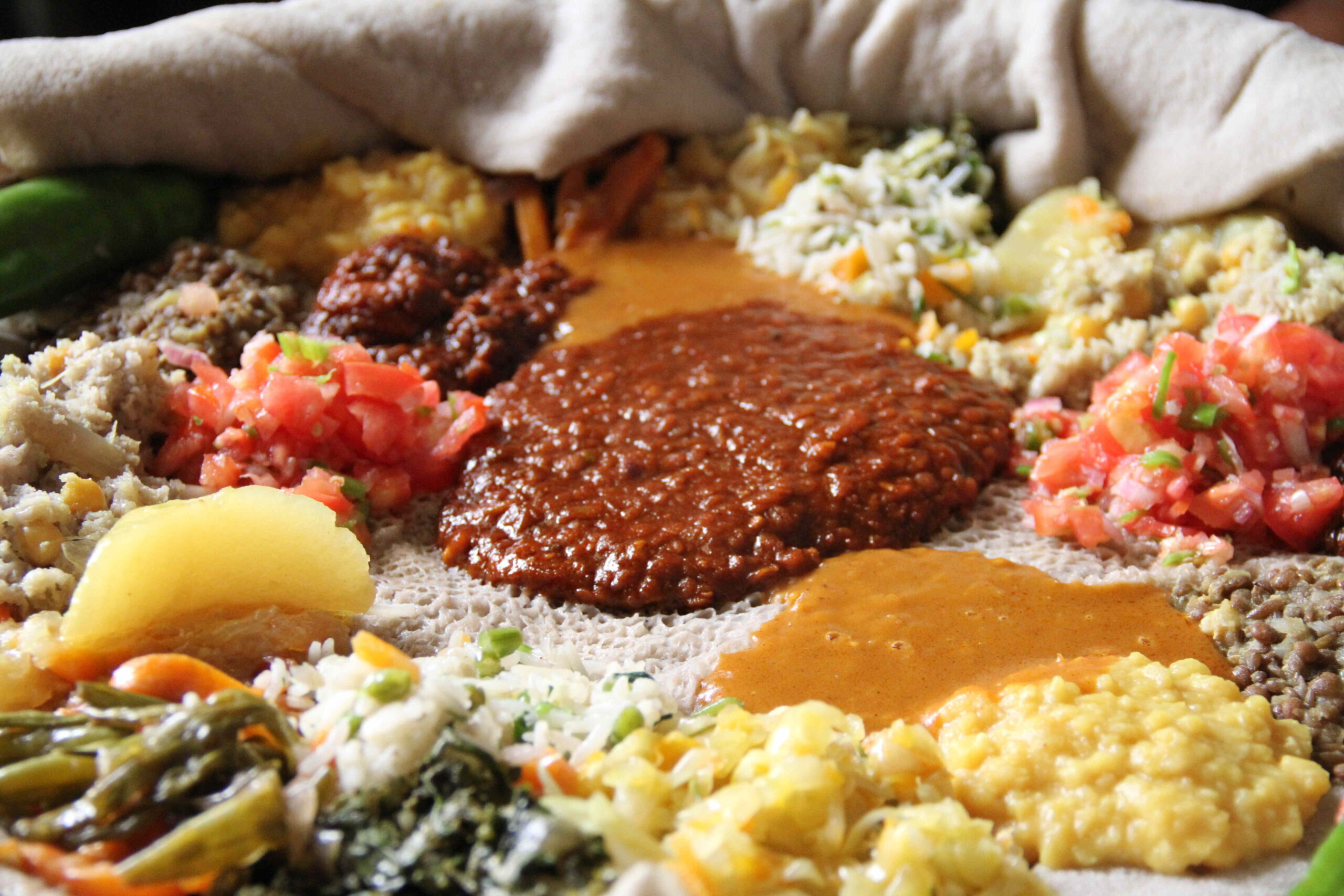While traditional Ethiopian cuisine relies heavily on injera, a spongy flatbread made from teff flour, which is naturally gluten-free, it’s important to note that some dishes may contain gluten-containing ingredients. Here’s a closer look at the gluten-free status of Ethiopian food:
1. Injera: As mentioned, injera, the staple bread of Ethiopian cuisine, is made from teff flour, which is an ancient gluten-free grain native to the Ethiopian highlands. This makes injera a safe option for those following a gluten-free diet.
2. Wots (Stews): Many of the popular Ethiopian Food, such as misir wot (red lentil stew), shiro wot (chickpea stew), and gomen (collard greens), are naturally gluten-free as they are primarily made with lentils, legumes, vegetables, and spices.
3. Meat Dishes: Dishes like doro wot (chicken stew), siga wot (beef stew), and tibs (sautéed meat dishes) are typically gluten-free as they are made with meat, vegetables, and spices.
4. Potential Gluten Sources: Some Ethiopian Food may contain gluten-containing ingredients, such as wheat flour or barley, which are sometimes used as thickeners or in bread-making. Additionally, some Ethiopian restaurants may serve injera made from a combination of teff and wheat flours, which would contain gluten.
It’s crucial for those following a gluten-free diet to inquire about the ingredients used in each dish and to communicate their dietary restrictions to the restaurant staff or host to ensure that suitable accommodations can be made.
Best Ethiopian Food
Ethiopian cuisine is a rich and diverse culinary tradition that draws its flavors from a unique blend of spices, herbs, and slow-cooked stews. At the heart of this cuisine lies injera, the spongy, slightly sour flatbread that serves as both a utensil and a base for the various dishes.
The country’s diverse geography and agricultural heritage have shaped its culinary traditions, with each region contributing its own unique flavors and ingredients. From the spicy and aromatic berbere spice blend to the comforting lentil and vegetable stews, Ethiopian food offers a tantalizing array of flavors and textures.
One of the defining characteristics of Ethiopian cuisine is the communal nature of its dining experience. Dishes are served on a large, shared platter, with injera serving as the edible utensil for scooping up the various stews and curries. This shared experience fosters a sense of togetherness and hospitality, reflecting the country’s deep-rooted cultural values.
Whether it’s the fragrant doro wot (chicken stew), the hearty misir wot (red lentil stew), or the vibrant gomen (collard greens), each dish in Ethiopian cuisine tells a story of tradition, spice, and the rich diversity of the country’s culinary heritage.





